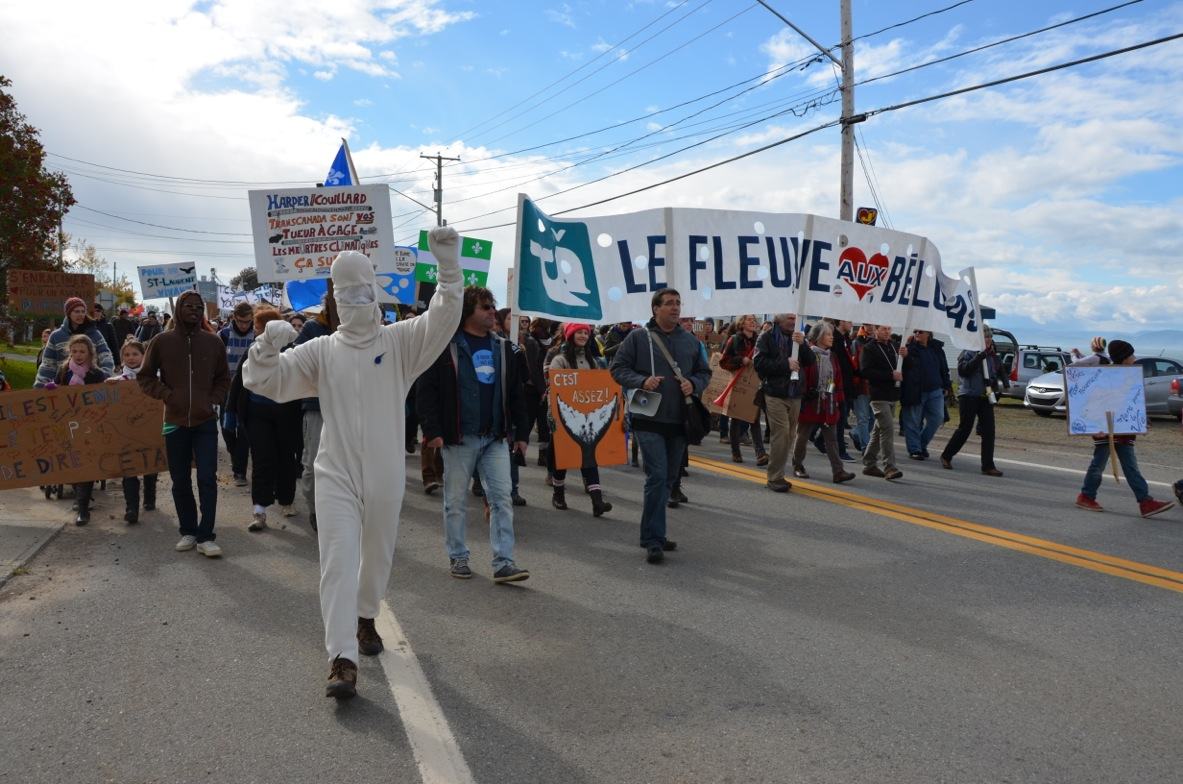This post was written by 350.org’s Energy East Organizer Aurore Fauret
 Yesterday, TransCanada announced it is abandoning its plans of a marine export port in Cacouna, Quebec – a launching terminal for its massive 1.1 million barrels-per-day Energy East tar sands pipeline. Not only that, but the company is delaying the entire pipeline project by two years, changing its target date for service from 2018 to 2020. For a project that aims to pump 1.1 million barrels of tar sands oil per day to Canada’s east coast, that means a lot of carbon will stay in the ground – about 803,000,000 barrels of tar sands oil.
Yesterday, TransCanada announced it is abandoning its plans of a marine export port in Cacouna, Quebec – a launching terminal for its massive 1.1 million barrels-per-day Energy East tar sands pipeline. Not only that, but the company is delaying the entire pipeline project by two years, changing its target date for service from 2018 to 2020. For a project that aims to pump 1.1 million barrels of tar sands oil per day to Canada’s east coast, that means a lot of carbon will stay in the ground – about 803,000,000 barrels of tar sands oil.
Make no mistake: this major delay is a significant victory for the movement and it deserves to be celebrated.
TransCanada would like everyone to believe that the decision to abandon the Cacouna oil port was because of its concern about impacts on beluga whales, and “was certainly not made because of opposition from some well-funded groups.”
Putting aside the question of funding – TransCanada is worth $60 billion, which dwarfs not only grassroots environmental groups but even other companies – it’s clear that Big Oil doesn’t want you to think that people power works. But it does.
Local citizens had started protesting the port because it would have threatened endangered beluga whales – a threat that TransCanada was fine with ignoring when it dreamed up the project. Resistance elsewhere in Quebec grew more fierce over the last year, with groups burgeoning all along the pipeline route. Some groups launched legal challenges, others marched 700km across the province, and landowners and municipalities in record numbers officially rejected the project.
This two year delay is a direct result of the strong grassroots opposition to the Energy East project – and Cacouna was just one point of resistance along the entire 4,600 km pipeline route. Stopping this port was step one; step two is stopping the entire project.
There are many Cacounas across Canada, and this growing movement is getting ready to tackle many of them at once. In the community of Red Head, where the Energy East line ends and where tar sands by supertankers could now depart, the community is mobilizing. In Winnipeg, in Treaty 3 territory, in Thunder Bay, in Kanehsatà:ke, in Fredericton, and so many other – all key points along the pipeline route – opposition is getting organized and growing.
Now that this victory has signalled the strength of the movement, we are looking ahead to July for the next massive pan-Canadian mobilization to stand up to this carbon bomb of a pipeline. If you want to be part of the first group to hear about these plans, you can join the Energy East Action Network: Click here to sign up